Hello friends,
Today, I am super happy to tell you about a truly extraordinary event that I experienced in Switzerland: the désalpe! You surely never heard this word, but you will see, it is quite an experience and in addition, I have lots of photos for you! Are you ready or ready? We leave for Albeuve, a very small town of 617 inhabitants located in the canton of Friborg, in the heart of the Swiss Alps.
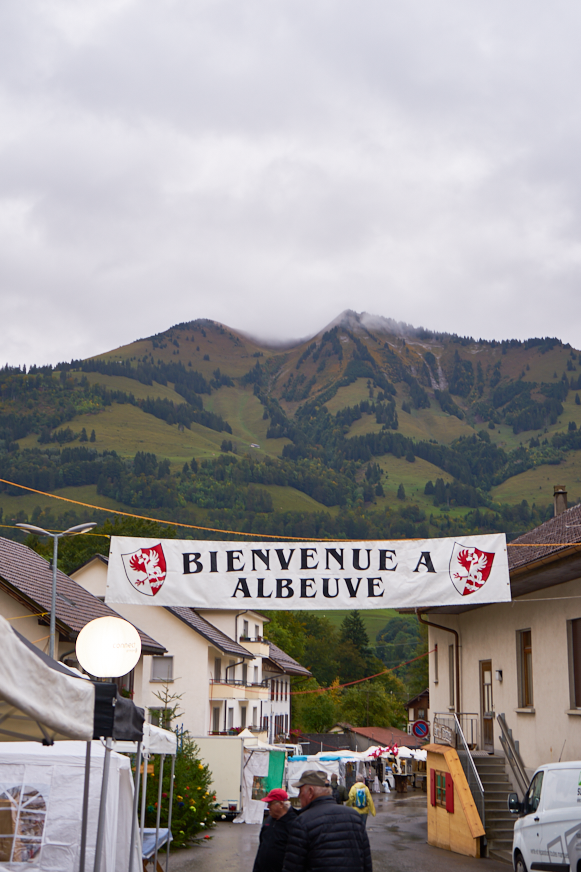


Here, as in several towns and villages in Switzerland, cows, goats, sheep and oxen leave the valley around mid-June to reach their summer pastures which are between 1,500 and 2,500 meters above sea level. It’s really high up in the mountains. There, the animals can enjoy, throughout the summer, a rich and varied diet since it grows up to 60 species of plants per square meter. What to make a different salad with each bite hi! hi! During this time, the shepherds, here called armaillis, and their family, will also live in the Alps with their herds. In the case of cows and goats, for example, they will have to milk them twice a day and will transform, often directly in the mountains, their milk into cheese and butter which will then be lowered into the valley.
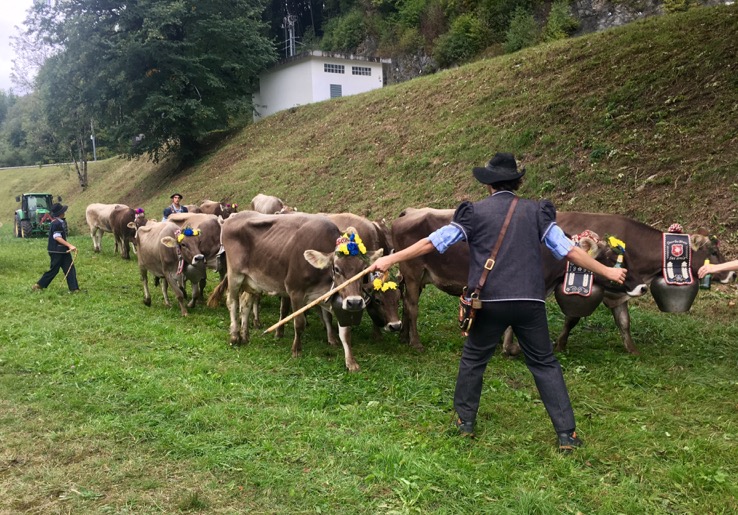
Armaillis at work with their cows.
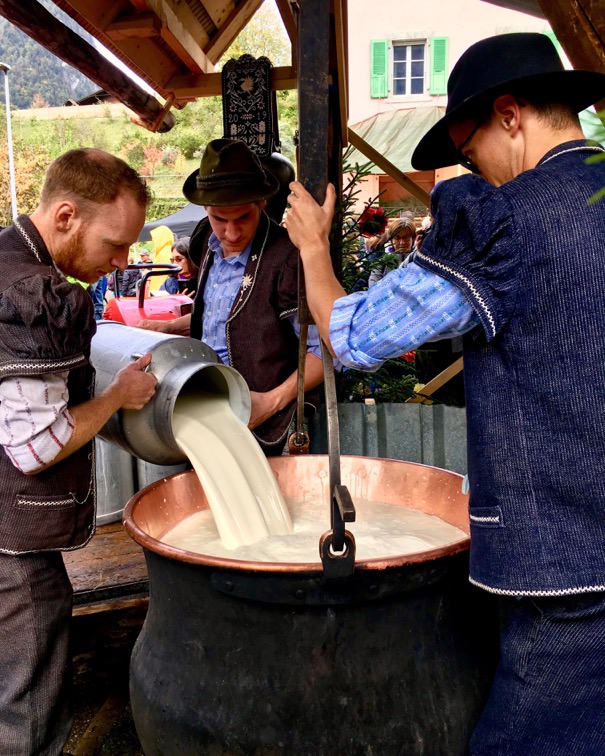
Cheese-armaillis pouring milk into a huge cauldron which they will heat to transform it into cheese.
Did you see how the armours are dressed in the photos? The clothes of men are called bredzon and those of women dzaquillon. Look, here is a photo of a whole family in traditional clothes.
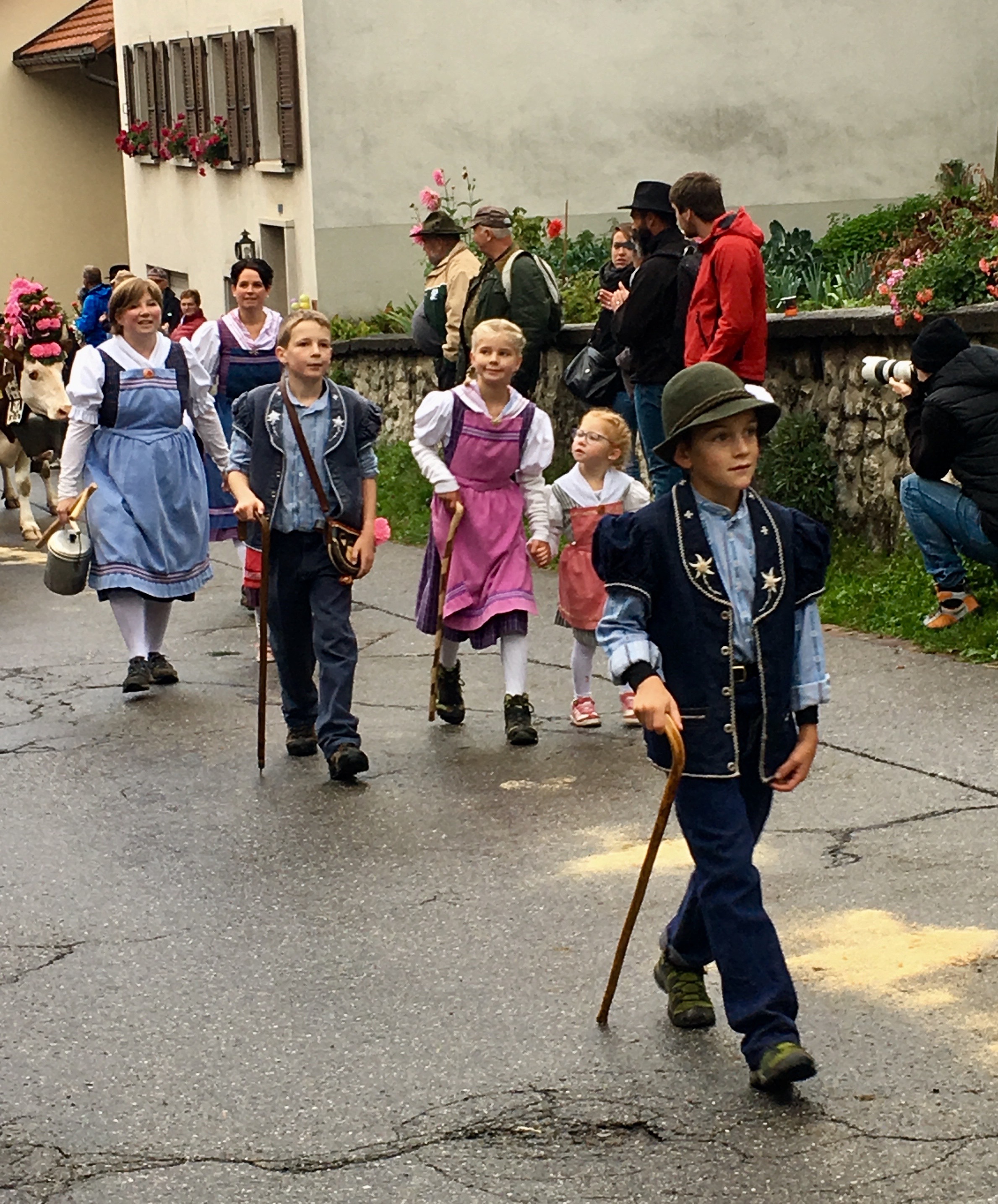
But do you know what? I learned something really interesting about this time spent in the Alps. Did you know that in addition to providing milk, cows do a very important job while they are in the mountains? By grazing, they help maintain the alpine ski slopes that are in these mountains, they improve the ecosystem by making room for several plants to grow and they even limit the risk of avalanches during winter! Our friends are cool huh?

So, for around 100 days, more than 500,000 animals and 17,000 armaillis will spend the summer working in the mountains, often without ever coming back down. During this time, in the winter pastures of the cattle, the hay is allowed to grow which, once harvested, will be used to feed the animals when the snow is there.
The desalp
When fall and the colder weather return, it is then time for the animals, the armaillis and their families to think of going back down into the valley before the cold and snow arrive. This long-awaited moment then becomes the most important and best known of the traditional mountain festivals. Thousands of people move to small villages to welcome those who have spent the summer all up there! The armaillis and their families wear their best traditional clothes, decorate their carts and even the animals with magnificent embroidered leather necklaces, large chimes bells and colourful flowers in order to parade in the streets when, after a very long walk, they finally reach the village. Depending on their rank and the prizes they have won, cows have more or less large bells and more or less flowers on their heads.
Here are some pictures of the parade!
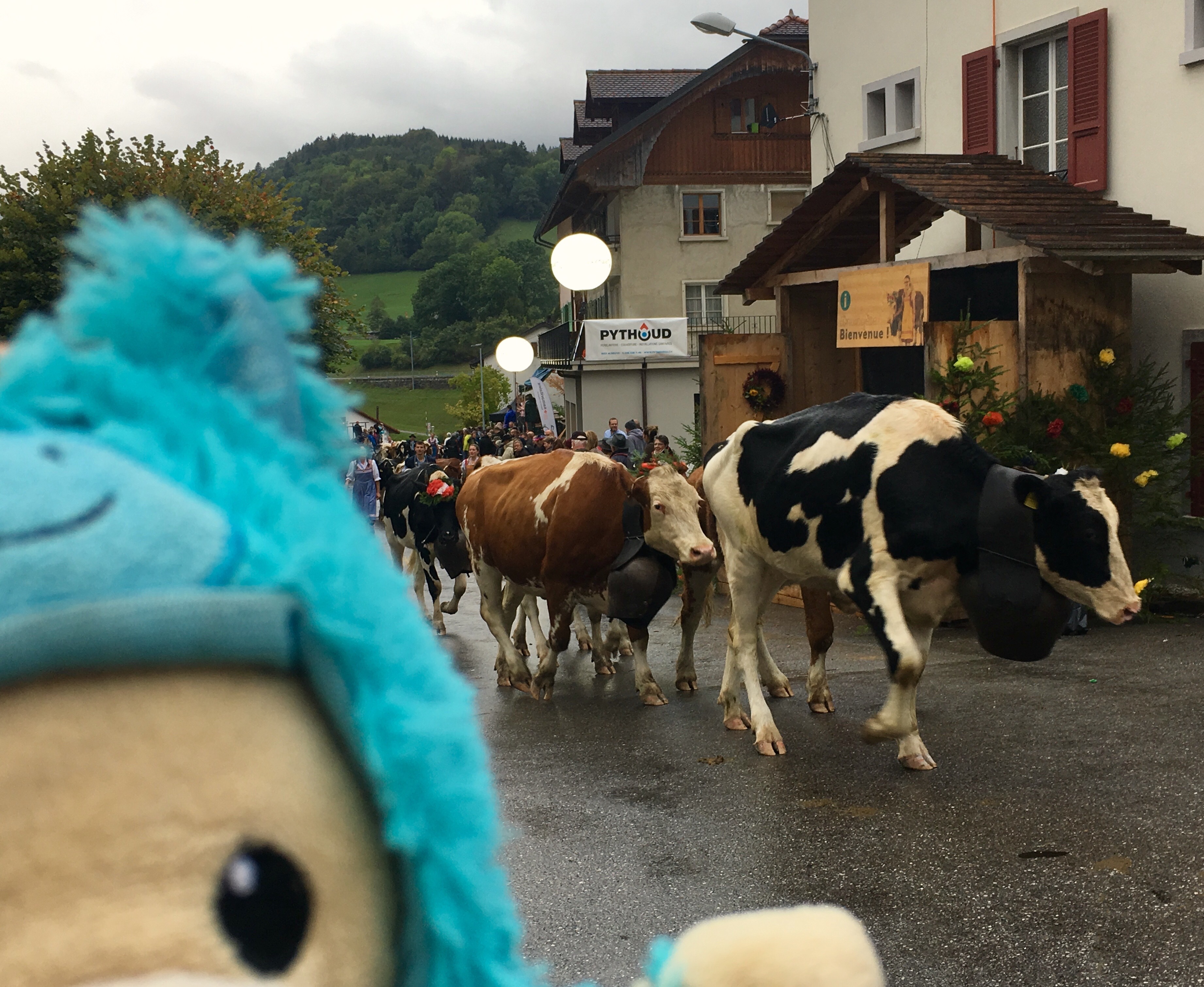





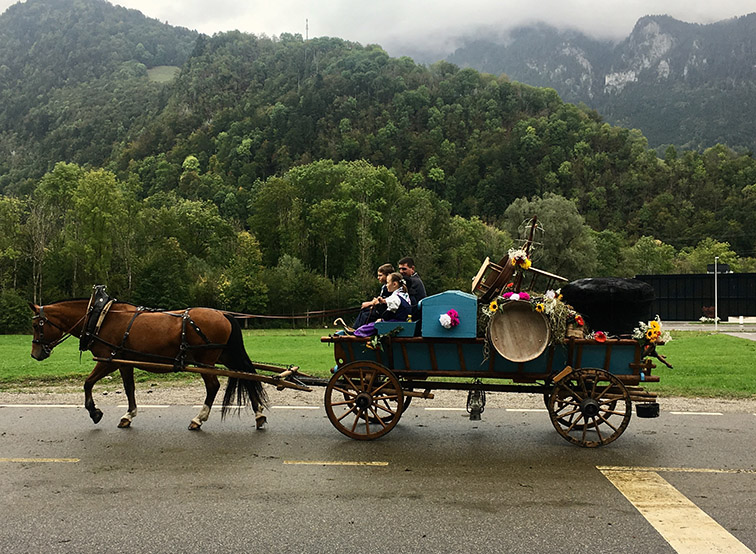
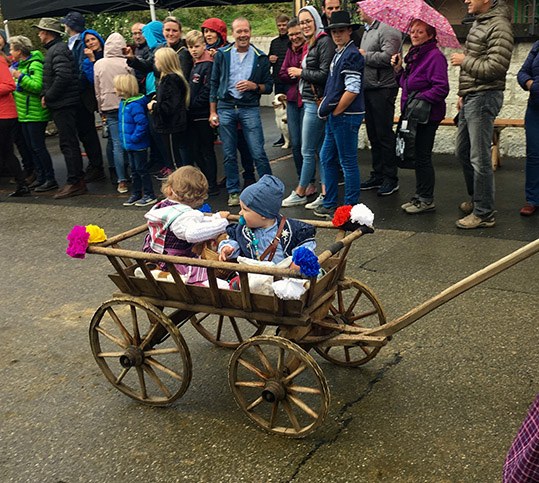

Celebration
The whole village is transformed to host this parade! Folk music shows, including the famous horns of the Alps, take place. Several kiosks of artisans and local products are installed and it is possible to eat on site full of traditional dishes such as chalet soup, chalet macaroni, raclette, cheese and bread from the Alps, etc. I loved having the chance to see the cheese makers at work and to discover the work of the craftsmen. I could see women making lace (it takes 6 hours to make 10 cm of lace!), A man forging metal, another sculpting bronze and a woman embroidering, by hand, the big leather necklaces cow ceremonies. Look, I took you some pictures.
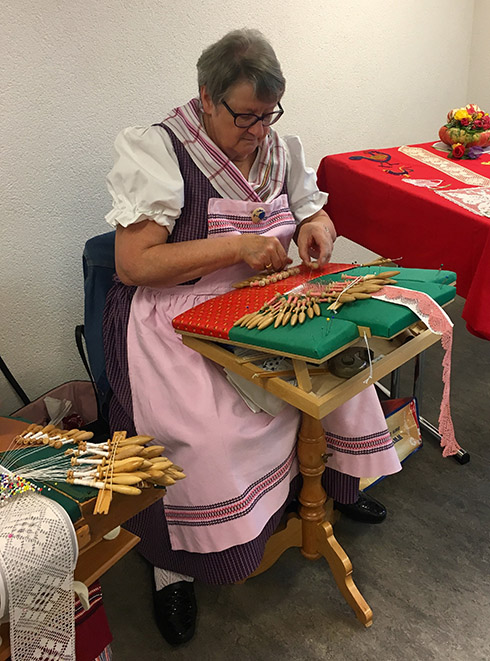

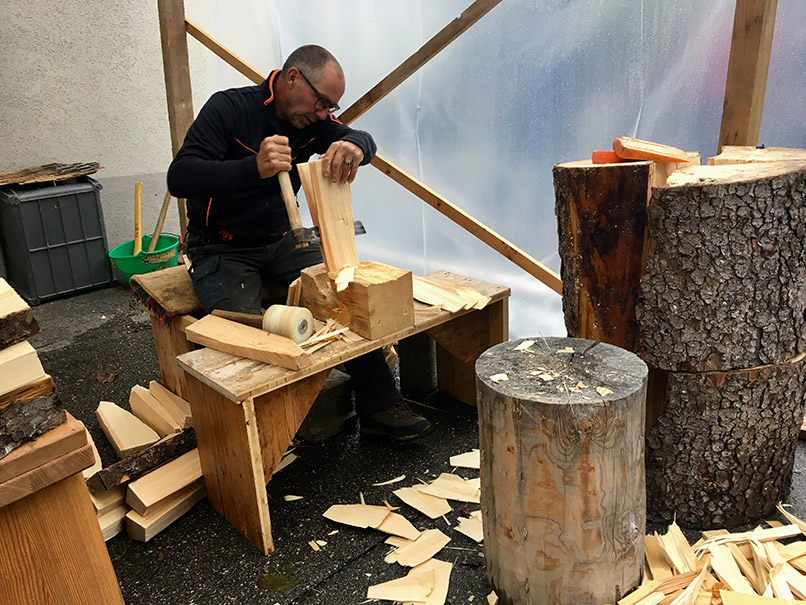

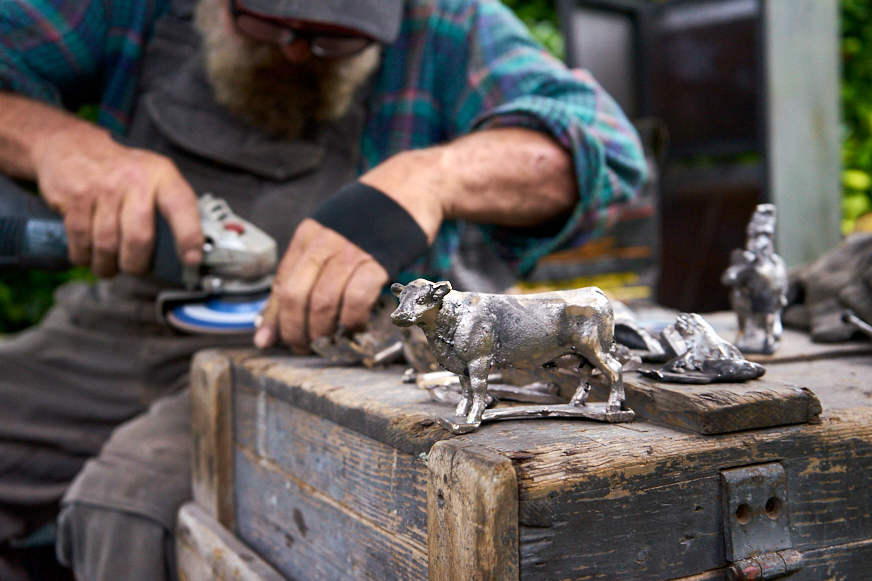
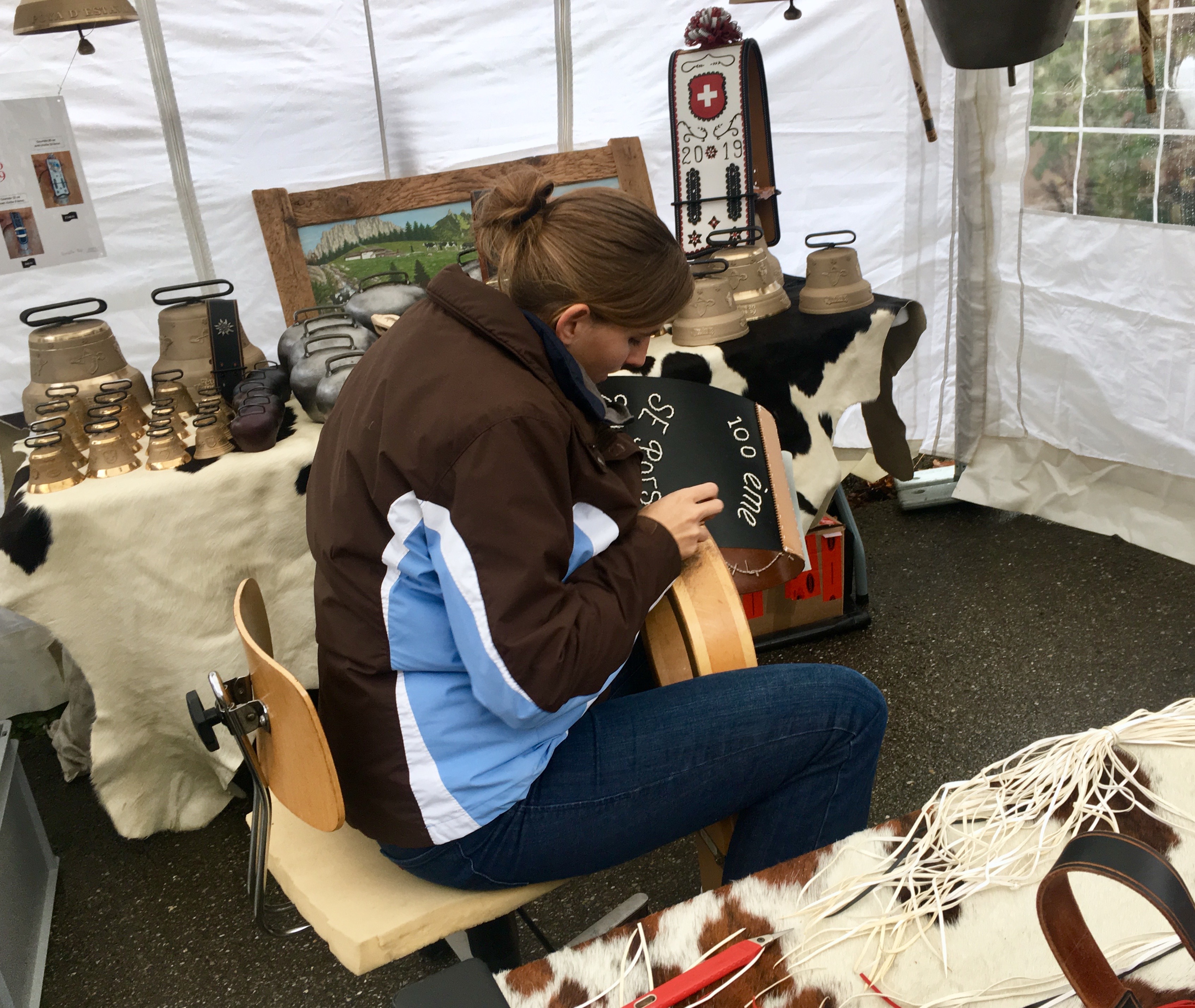

It was truly an extraordinary celebration. If you want, go to my Facebook page, I share two videos of my day there. One where you can see a herd arriving in the village and hear the deafening sound of bells, and the other part of a room played with the horns of the Alps.
What are cow bells used for?
Before leaving you, I wanted to tell you a little about these famous bells. Did you know that, although the ones they wear around their necks in the mountains are much smaller than the ceremonial ones, almost all cows in the Alps have a bell? These allow the armaillis to find a cow that would have been lost in the mountain just by the sound. Traditionally, they also believe that these bells would keep predators away, protect cattle from snake bites and scare away evil spirits. But hey, that’s a belief. On the other hand, there have been debates on this subject for several years since studies have proven that these bells made as much noise as a jackhammer, and therefore, that they made a large part of the cows deaf. So many people want this practice to be abandoned! What do you think
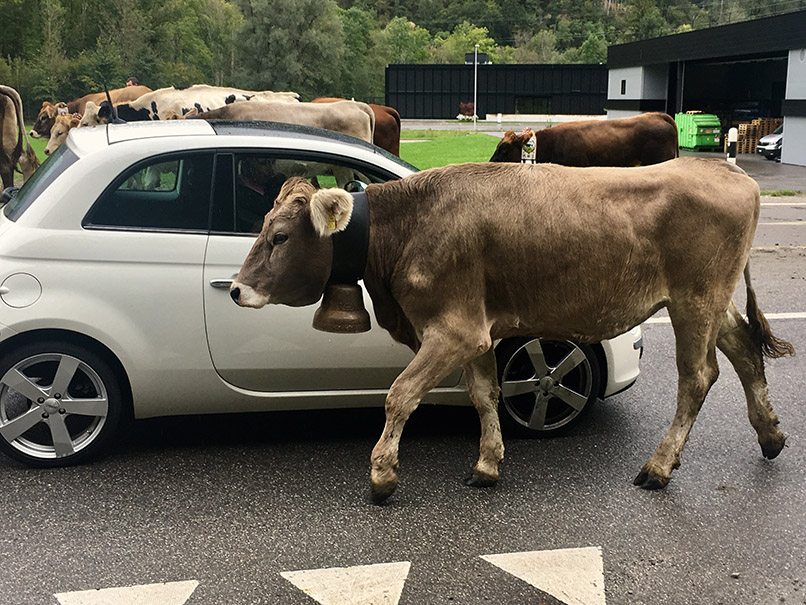
I hope you enjoyed my story about the mountain biking and that you learned new things! I am leaving you to go take my bath … because a cow really sucks a lot!

See you soon,
Nounoucorne xxx